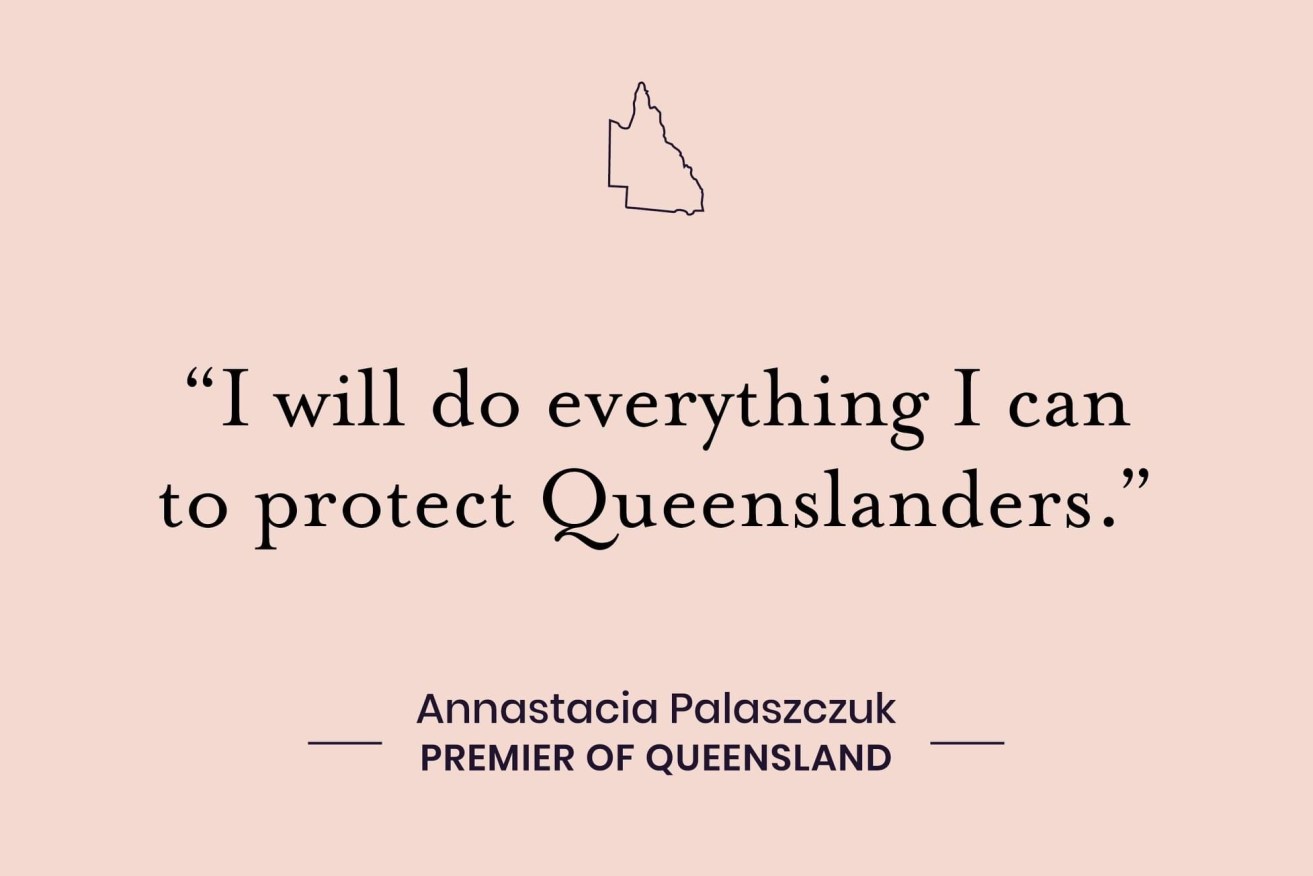Palaszczuk’s social strategy: Money for nothing and your clicks for free
Sometimes politicians want the spotlight and sometimes they pursue a “small target” strategy. Sometimes they play to their strengths, and sometimes they attack a rival’s weaknesses. But those rules don’t apply to the upcoming state election, writes Sean Parnell

A typical social media post from Annastacia Palazczuk.
And sometimes, like in a pandemic, it doesn’t matter what they want because voters will determine what they need of politicians. That puts Annastacia Palaszczuk in an extraordinary position ahead of the October 31 election – and it seems the Labor Party wants to keep her upfront, in lights, with the spotlight, the airtime and everything else.
As has been said before, 2020 is not a normal year and the run to the state election – with limited parliamentary sittings and no budget as such – is certainly abnormal. The tense public mood only adds to the unpredictability.
The Liberal National Party might be amassing a sizeable campaign war chest, but for the first time the Electoral Commission of Queensland will have expenditure caps. Besides, it counts for little when Queenslanders are depending on Palaszczuk’s social media posts and the Government’s advertising for information on their daily lives. Government media, and media about the government, is being funnelled into those daily press conferences where Palaszczuk is usually at the helm. But the social media and advertising brings some production value and pizazz – and Queenslanders, for now at least, are loving it.
Take Wednesday for example, when Palaszczuk restricted the borders again, something her followers on social media have been demanding for weeks. Her “breaking” Facebook post had 12.7k reactions – predominantly likes or loves – by nightfall. It was shared 15.3k times and had attracted about 12,000 comments, mostly congratulatory. Palaszczuk followed it up with a video, of a stylised state logo above the words “Annastacia Palaszczuk”, and the message “We’re putting Queenslanders first.” There is some deliberate, calculated messaging at play here, as her taxpayer-funded staff and Labor apparatchiks keep one eye on the approaching election. That simple follow-up post was receiving 20 likes a minute in the first half an hour – and it didn’t even offer any news or fresh information.
It is not surprising that in a crisis the more tech-savvy citizens will go directly to the source. In the last week of July, Queensland Health reached 21,435,888 people on Facebook and fielded about 50,000 comments – well up on their normal level of engagement.
Liberal National Party leader Deb Frecklington, by contrast, is struggling for relevance, which is completely understandable given the pandemic. Her Facebook posts, on myriad issues, usually attract several hundred likes (given the party’s internal troubles of late, Frecklington might be happy with a subdued response rather than a negative one).
Yet, a year ago, Palaszczuk was not doing much better than Frecklington in the social media stakes. On August 4, 2019, Palaszczuk posted a “breaking” Facebook post that the government would make Christmas Eve a public holiday. Even now, it has only had 1.4k reactions and been shared 242 times, and the comments were a jumbled mix of praise and damnation, religious lessons and historical references. And it was a post about Christmas – everybody loves Christmas, right? – and an image dressed up with candy canes and stars, underlined by “Palaszczuk Government” written in Labor colours of red and blue. Palaszczuk was the Premier, but to many she was just another politician. And nobody likes politicians.
The difference, of course, is the need for leadership, for clear direction and articulate explanations, and for those who find themselves in such positions during a crisis to take control. Politically-speaking, this gives Palaszczuk, and through her the Labor Party, an extraordinary advantage. Guidelines on government advertising and even the new electoral expenditure caps do not prevent leadership in a crisis being amplified to the masses.
Government advertising guidelines normally seek to limit advertising in the leadup to an election, especially in the caretaker period. Yet there are exemptions: the latest guidelines, from what feels like a century ago in December 2019, allow for ongoing advertising in the event of a “urgent emerging issue” or a health campaign or emergency service information. That means the TV ads pointing out the COVID-19 death toll overseas and who exactly has kept Queensland safe will continue. The line between Labor and government, Palaszczuk and premier can be blurred.
The expenditure caps that came into play on August 1 limit a party to spending $92,000 per electoral district, albeit with external support also available. But even if the parties spend that on the local candidates, Palaszczuk would still dominate. That said, the Electoral Commission will not audit their spending until the post-election financial disclosures. There are significant penalties for breaches, but if the LNP believed it would make a difference it might be willing to take the gamble.
For now, the key difference in pandemic politics appears to be the border – the one Palaszczuk closed, twice, and Frecklington, at a point in time, wanted to open. The situation in Victoria and to a lesser extent NSW has made Queensland, and Queenslanders, defensively parochial. They love the fact that Palaszczuk is, according to Facebook, “putting Queensland first,” as if she or anyone else might otherwise have put Queensland last.
Queensland, of course, has other simmering issues, such as crime, child safety, and the need for better infrastructure and more tourist drawcards. The budget is dire and forecast unemployment levels terrifying. If those issues come to the fore, while Palaszczuk has the spotlight, the Labor strategy could quickly unravel. The same would apply if the COVID-19 situation worsened in Queensland and the Premier was stuck in the headlights.
But for now, and for better or worse, this is the Annastacia Palaszczuk show. Her hour has come – and, in 2020 time, that could last for minutes, weeks or years yet.












